2024 Hyundai Santa Fe First Look: Standard Third Row and Striking Design
The midsize SUV receives a top-to-bottom makeover, but no plug-in this time.
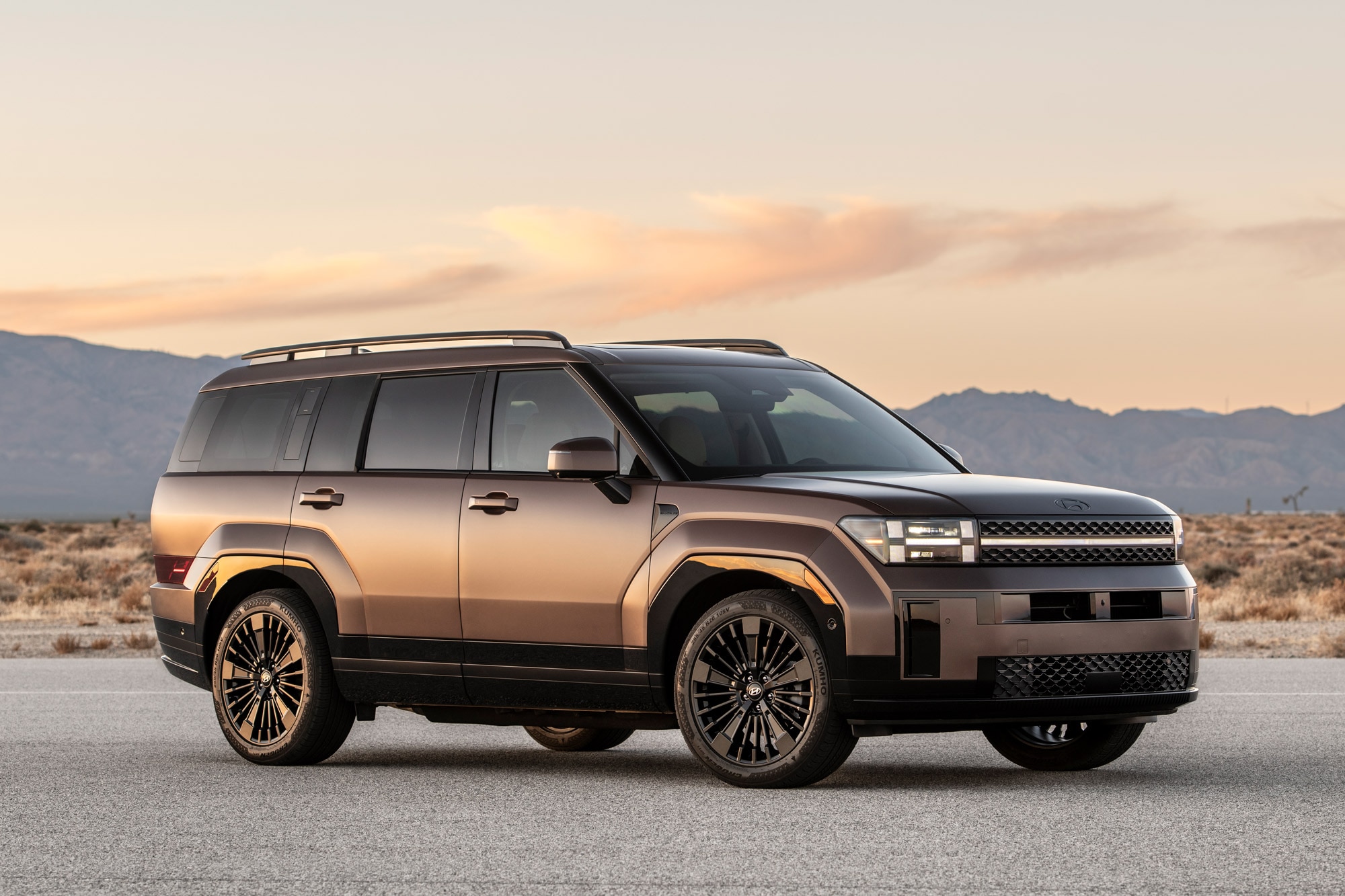 Hyundai
Hyundai
The redesigned-for-2024 Hyundai Santa Fe is a stunner, with body styling that calls to mind a certain British luxury SUV and an airy, versatile interior that should accommodate large families well.
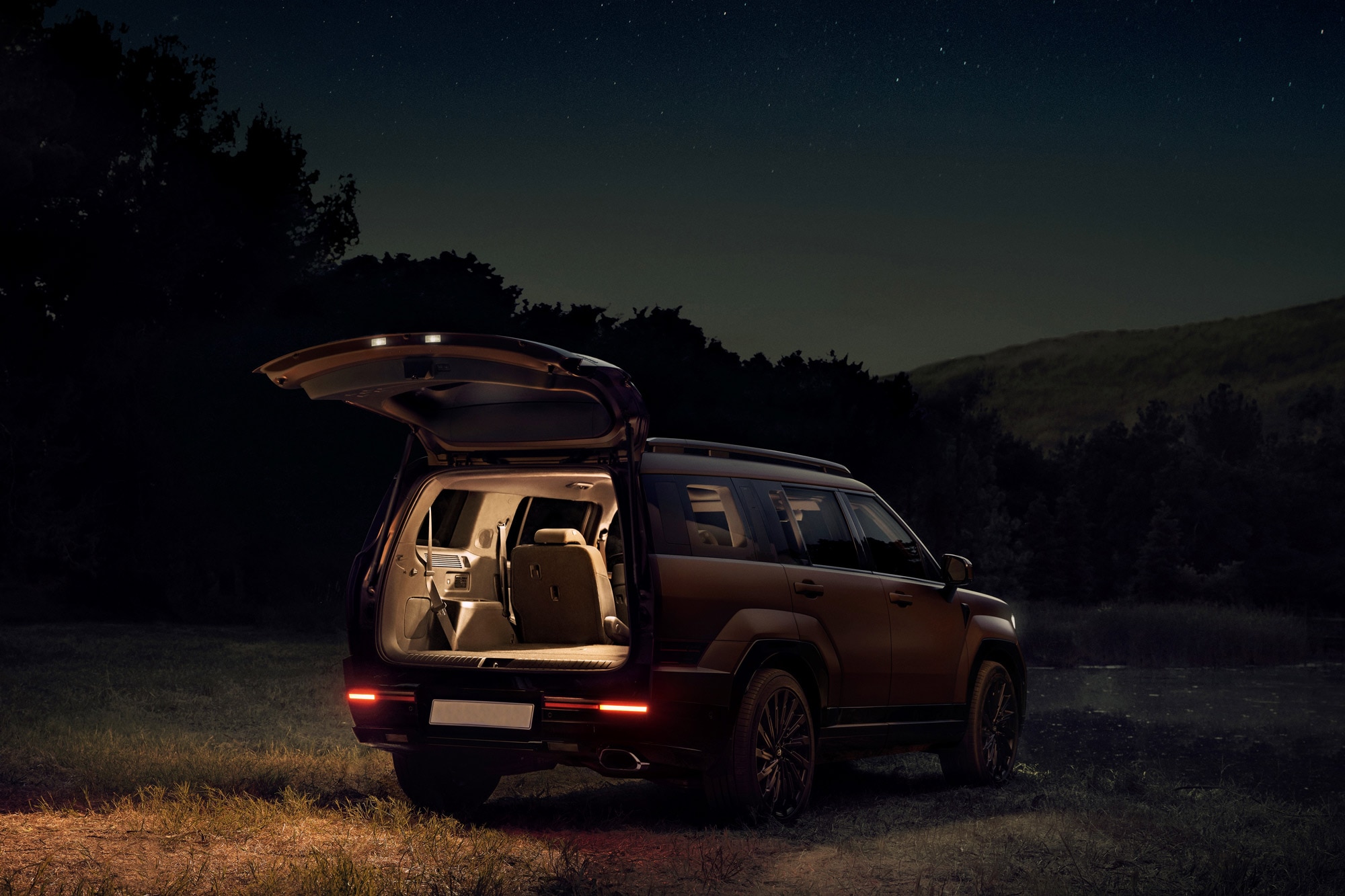 Hyundai
Hyundai
The Fifth-Generation Santa Fe Would Look at Home in Land Rover's Lineup
If this is the direction of Hyundai design, we're here for it. The 2024 Santa Fe is no wider than the last version, but it's longer by 2 inches and taller by an inch and a half, which improves things — namely, aesthetics and space — both inside and out. It's also boxier, with a prouder, squarer nose than its predecessor and without the sucked-in cheeks or pinched body creases. Apart from the blocky, half-octagon fender bulges, the Santa Fe's exterior is a study in rectangles, with edges that are less rounded than they are beveled.
In keeping with the current trend toward minimalism, all the shiny trim is gone. And in keeping with the current trend toward off-road appearances, a glossy black band circles the bottom of the vehicle, making it look higher riding than it is. The all-wheel-drive-only XRT trades the shiny outline for matte cladding, which ruins the effect, but it compensates by actually riding higher than the other trims.
That's not the end of Hyundai's eye trickery. Framing the subtly tapered greenhouse in black A-, B-, C-, and D-pillars provides the illusion that the roof is floating and makes the Santa Fe look more than a bit like the current Land Rover Range Rover. If you're struggling to make the distinction from a distance, the H-shaped head- and taillights should give it away as a Hyundai.
When the vehicle made its debut at the 2024 Los Angeles Auto Show, the head of the Hyundai Design Studio, Hak Soo Ha, talked about how his team went about this redesign differently, starting from the liftgate rather than the front end. The idea, according to Ha, was to turn the cargo hold into "a mobile terrace, a kind of indoor/outdoor living space that you can take anywhere." Surely many Santa Fe owners will appreciate the 6-inch-wider opening.
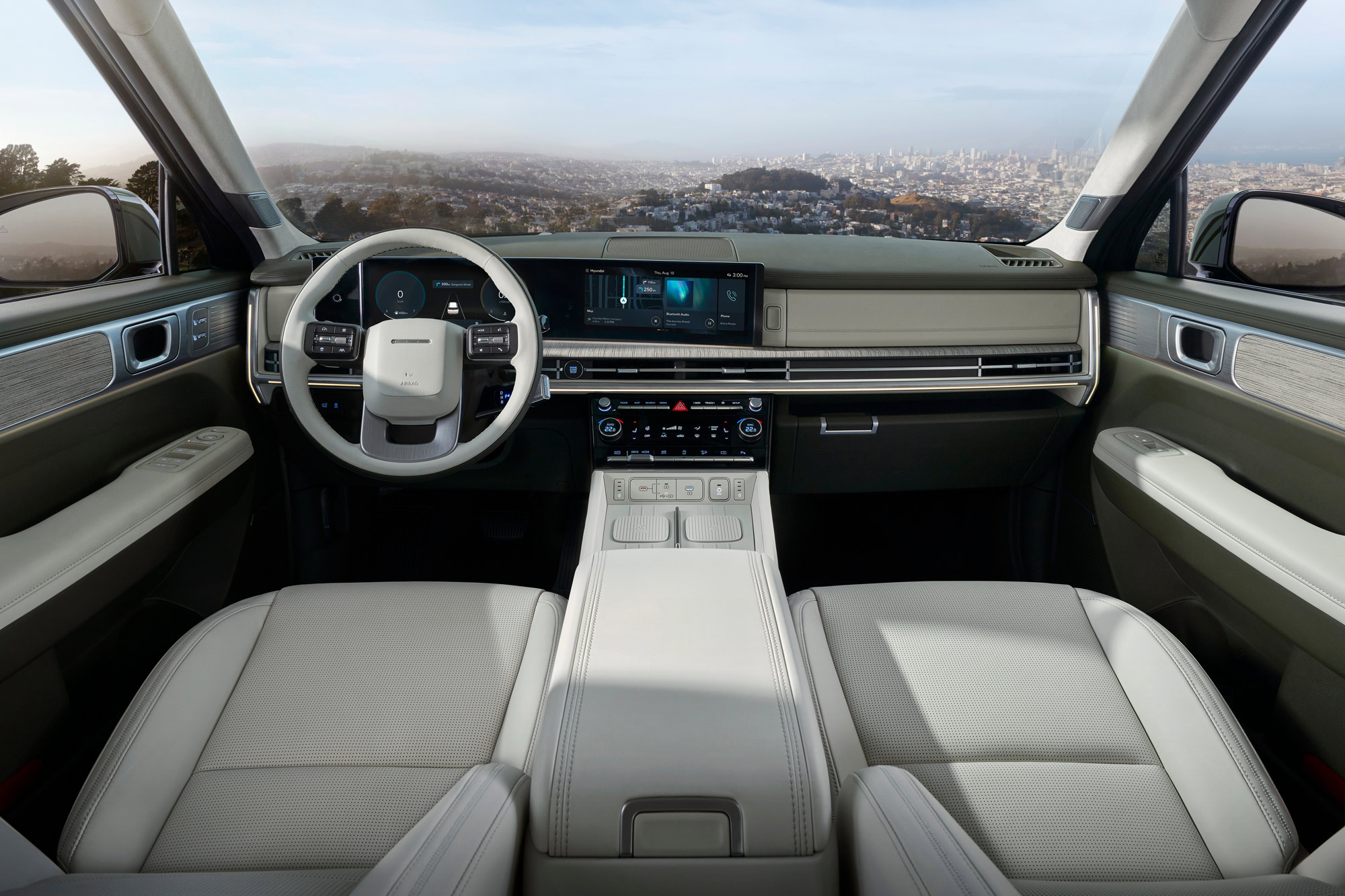 Hyundai
Hyundai
Only Two of Four Powertrain Options Carry Over
Shoppers won't find anything new under the hood of the redesigned Santa Fe, nor will they have as many options as before. Hyundai has dropped the entry-level naturally aspirated 2.5-liter four-cylinder and the plug-in hybrid from the lineup, leaving U.S. buyers to choose between the newly standard turbocharged 2.5-liter making 277 horsepower and the familiar turbo 1.6-liter hybrid powertrain, now tuned to make 232 ponies.
The 1.6-liter engine will likely pair exclusively with all-wheel drive as it did before, while the 2.5-liter version offers it as an option.
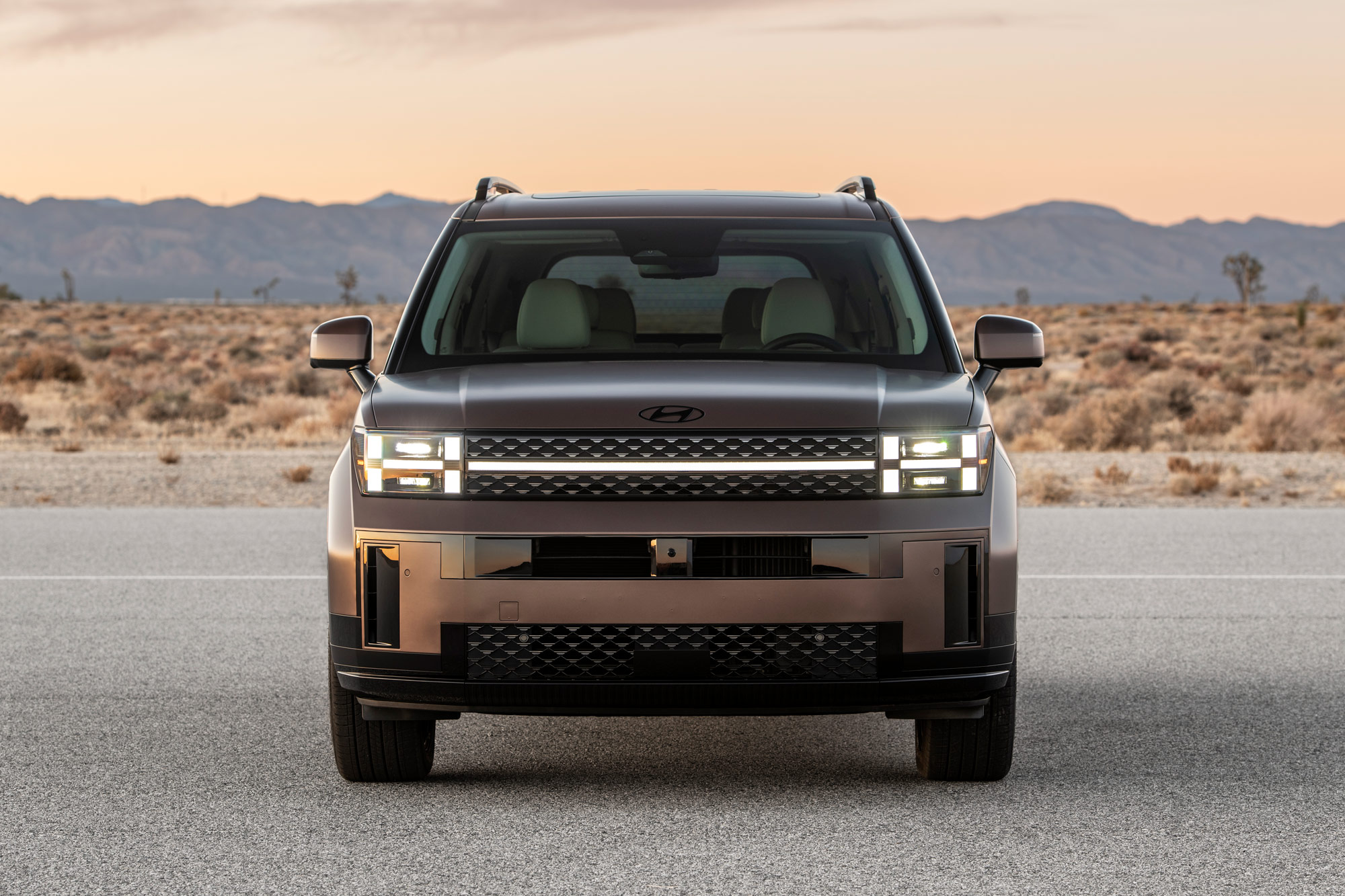 Hyundai
Hyundai
Hyundai Changes the Seat Count Again
For ages, Hyundai has been of two minds about the best seating arrangement for this midsize crossover. The fourth-generation model arrived for the 2019 model year offering a couple of configurations.
Hyundai called the two-row version the Santa Fe (previously the Santa Fe Sport) and the three-row model the Santa Fe XL (previously the Santa Fe). It then dropped the XL model for 2020 to make room for the all-new three-row Palisade, leaving the lineup with just the one variant: the two-row Santa Fe. For the fifth generation, the model comes standard with three rows and six or seven seats.
The third row reclines by 10 degrees and folds down level with the cargo-hold floor, extending the storage capacity from a class-leading measurement of 26 cubic-feet behind the third row to a middling volume of 41 cu-ft behind the second.
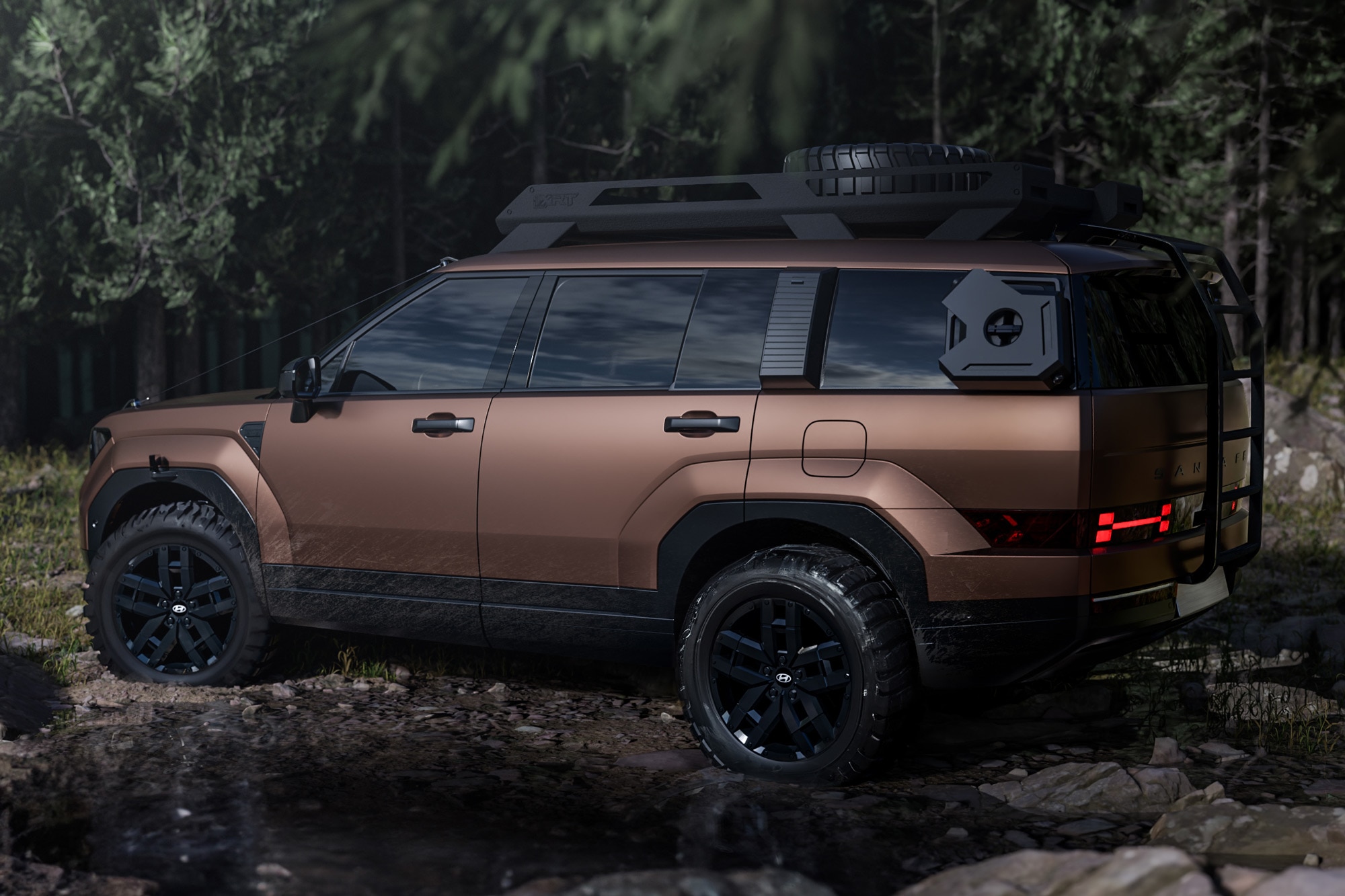 Hyundai
Hyundai
Hyundai Packs in Lots of Perks
Even the entry-level Santa Fe offers an impressive interior and feature set. A decent suite of driver-assistance tech — including blind-spot monitoring — is standard, as are a hands-free liftgate and a 12.3-inch infotainment screen with wireless Apple CarPlay and Android Auto functionality.
Upper trims get a matching driver-info display, situated next to its mate under one piece of curved glass. There's also a screen for the climate controls located low in the center stack. It looks nicer than last year's button-heavy console but could prove frustrating in glove weather, when owners will likely use it most.
Naturally, the range-topping Calligraphy trim sports the most goodies, including new relaxation front seats with extendable calf rests, nappa leather upholstery, and a two-phone wireless charging pad.
This model also rolls on 21-inch wheels, but whether that's good depends on whether you prefer style over comfort.
Two other features worth noting are the Santa Fe's new bilateral center console and UV-C sterilization tray. The console can pop open from either end, giving both front- and second-row occupants access to the storage space. The tray is an available small cubby for the passenger's side of the dash where you can place your phone, wallet, gloves, mask, or other small items and, with the press of a button, expose them to UV light to kill off surface bacteria.
 Hyundai
Hyundai
Deliveries Begin Early Next Year
The Santa Fe will arrive at dealerships in the first half of 2024. Hyundai remains mum on pricing, but we wouldn't be surprised to see a substantial increase over last year's $30,000 baseline given the revisions to the powertrain lineup. Previously, the entry-level model sported a 191-hp four-cylinder, and the cheapest way to get the turbo 2.5-liter was in the $42,000 Limited trim.
Now that the boosted engine and a third row are standard, the Santa Fe offers about as much power and family-hauling utility as the big-grilled Palisade, which opens at about $38,000. That alone could justify a four- or five-grand price hike.
All vehicle pricing includes MSRP plus destination charges (set at the time of publication) and will be rounded to the nearest thousand.
Written by humans.
Edited by humans.
 Beth Nichols
Beth NicholsAfter graduating from the University of Michigan, Beth Nichols stumbled into automotive journalism and found her footing, jumping between a few car magazines before going freelance. Her head, once full of useless facts about literature and art history, now holds useless facts about vehicles. She edits, checks, and occasionally creates content for Capital One, and though she understands it’s customary to write a bio in the third person, I don’t like it.
Related articles
View more related articles